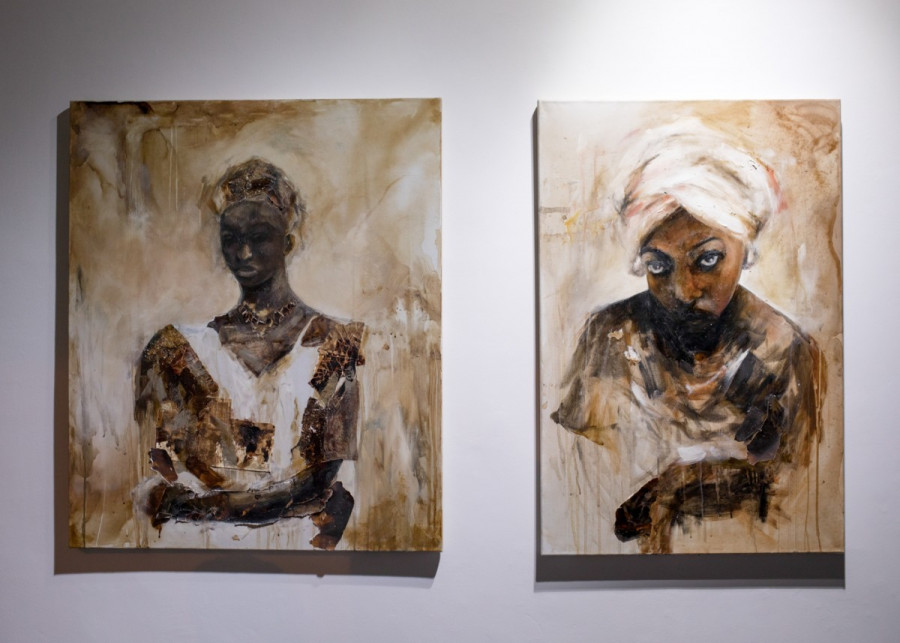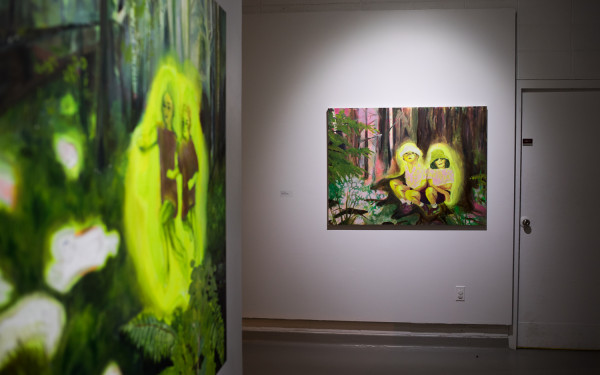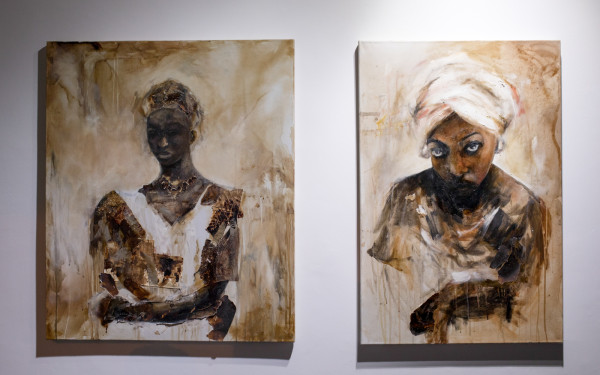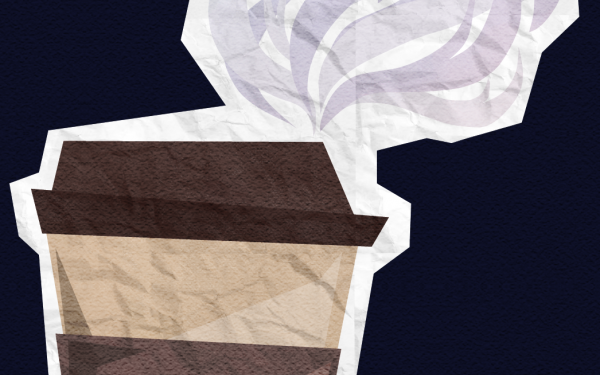Visual Artist David Durham Makes Art Out of Coffee
Durham’s Piece “Hidden Figures” Sheds Light on the Historically Silent Role of Slavery in the Coffee Market of Colonial Brazil
David Durham contributed two of his paintings together entitled Hidden Figures at the student-run Visual Arts Visuels Gallery’s current exhibition, Hyper Real: Black History Exhibition and Event Series.
The Hidden Figures pieces are inspired by the coffee market’s involvement in slavery, explained Durham, a studio arts major. “The works are created with coffee [and acrylic and collage] to serve as a statement of the silent role of slavery in the coffee market within colonial Brazil,” Durham said.
“Coffee is a beverage that I consume on a daily basis, and the fact that it is, carries such a historical nuance to it,” he continued.
Since the inspiration first came from coffee, Durham felt inclined to use the colour and the medium. Coffee’s colour was new to him, not only express his artistry, but it also contributed to his hope for viewers to see the ambiguous meaning of using it.
Durham’s portraits include two unidentified figures, who are meant to represent slavery. He leaves the stories and identities of the characters open to interpretation in his art. “If society is not willing to address the contribution which my people had provided society with, why should these figures be identified? Therefore their identity becomes hidden [in the series],” Durham explained.
The figures created in Durham’s work appear feminine; one portrait has their eyes smudged or subtlety hidden, and the other has their eyes shut.
Durham hopes the audience does not contemplate the gender of the slaves in these pieces, rather, he said he would like the audience to view them simply as a human beings.
“[…] I feel these roles upon the slave race have been hidden [and under addressed] over time; we cannot identify with these figures in terms of their gender, ethnicity or backgrounds. And that is the point I’m trying to convey, which is suggested in the title Hidden Figures,” Durham said.
His art is meant to be seen as ambiguous, connecting many different forms of history or personal experiences to communicate a message.
“ Hidden Figures serves as a historical and personal analysis of my perspective regarding this history, as being untold or disregarded by society,” Durham explained. “[…] It is [also] an homage to the slave race whose lives were risked while producing such commodities that we consume in today’s world.”
Durham said that the portraits also represent how society views him as a person of colour.
Related- “Hyper Real”-Life Experiences of What It Means to be Black in Montreal
- Elizabeth Eugene Debuts Multimedia Piece “Allow Me To…” at the VAV
- Hyperrealist Artist Daniel Itiose Exhibits Expressive Paintings at the VAV
“There’s no [particular] familial connection to my roots; I’m viewing this in a general direction, as a young man of colour, it’s a part of my Black history,” said Durham.“I hope to spark conversations in regard to histories of this nature through my art.”
The artist’s main intention with his art is to influence others to learn more about Black history and how something which is included in his everyday life such as coffee played a role in his history.
“The history of coffee imbues various socio-cultural nuances indicative to the slave trade where slaves were shipped to plantations, whilst stricken by inhumane labor and scourge. Forced in producing prolific natural resources, slaves contributed to the coffee market during slavery in Colonial Brazil,“ said Durham.
“Coffee is my must-have beverage that I consume on a daily basis. It seldom dawns in our minds that such a mundane commodity could encapsulate both a historical and symbolic pedigree,” he continued.
“My hope is that my art can fuel more thoughts and analytical discourse among viewers. I opt for viewers to question the aesthetic and symbolic ambiguities in this diptych, acknowledging the history behind mundane objects that we might consume, today.” ⎯ David Durham
“My hope is that my art can fuel more thoughts and analytical discourse among viewers,” said Durham. “I opt for viewers to question the aesthetic and symbolic ambiguities in this diptych acknowledging the history behind mundane objects that we might consume, today.”
This exhibition is the first for the artist and he will have plans down the line to continue the Hidden figures piece where he will go more in depth with his own history. Durham plans to do that by “expanding this series by ascertaining as many attributes of this history as possible and further executing it in an artistic format.”
“My future objective is to create a breadth of works that highlights other commodities and contributions of slave labor, in order to keep the conversation going,” he said.
There is actually a third painting attached to Hidden Figures but unfortunately the exhibition couldn’t display all three, causing the artist to choose the best two pieces to display his art.
“Each figure carries their own story and experience,” Durham said.
“The third piece features a fragmented face of an unknown slave figure, confected of coffeed collage materials,” Durham said. At the next exhibition Durham hopes to release that third piece of Hidden Figures.
There were thoughts of meshing two portraits into one, but the artist thought that each piece would require space, giving the audience the chance to feel differently about each piece of work.
“Each figure has a story to be told,” Durham said.
Hyper Real will be exhibited at the VAV until Nov. 30. For more information about this exhibition and upcoming ones, visit http://vavgallery.concordia.ca/.


_600_832_s.png)




